Euphorbia ingens (Candelabra tree) Profile
Written by Iris
Nov 12 2021
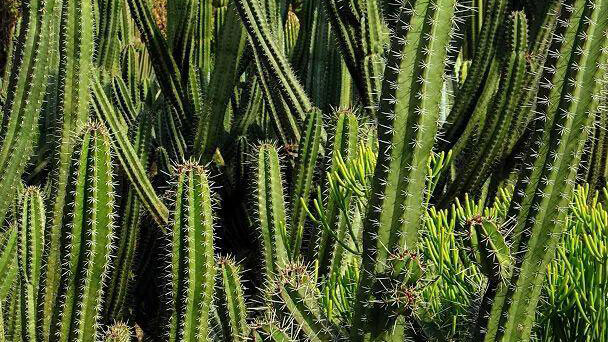
Euphorbia Ingens (Candelabra tree) is a spiny, evergreen, succulent tree with a short trunk, usually growing to 12 m tall. Euphorbia Ingens was collected from the wild and used locally as medicine and occasionally as wood. Euphorbia Ingens is grown as an ornamental plant in succulent or rock gardens in South Africa and the United States.
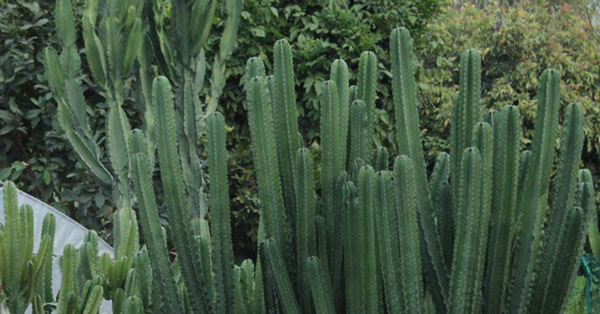
Read More:
12 Popular Evergreen Plants with Pictures for Beginners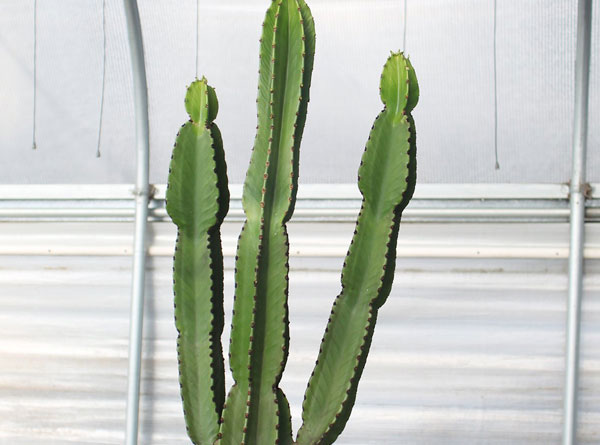
Propagate Euphorbia Ingens with Stem Cuttings
Wear gloves before handling the plants because it is naturally poisonous.
Use a sharp knife to take cuttings from around the branching point.
Hold it under cold running water to wash away the milky latex.
Allow the cutting to dry for about two weeks. You will notice a callus over the cut ends.
Plant them in preferred soil and see your Euphorbia Ingens grow into a beautiful tree.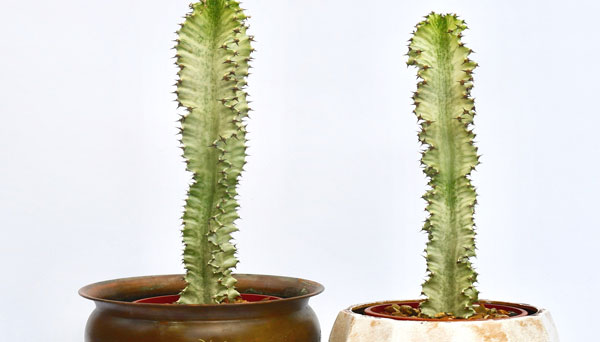
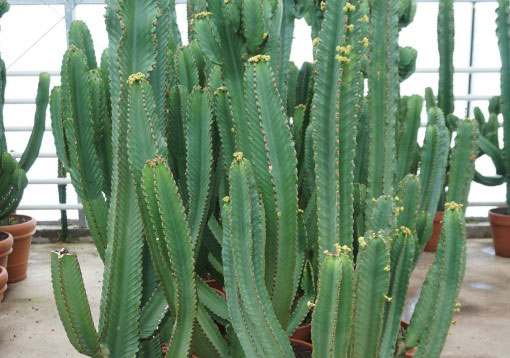
The latex is taken in very small amounts, often on sugar, as a drastic purgative and to treat alcohol dependency.
The stems of Brachystegia spiciformis are chewed and the fibres dipped into the latex of this plant; the fibres are then dried and burnt and the smoke inhaled to treat asthma and bronchitis. The latex is used to treat chronic ulcers, warts and cancer. Pulverized root or a few drops of latex in porridge is eaten to treat bronchitis.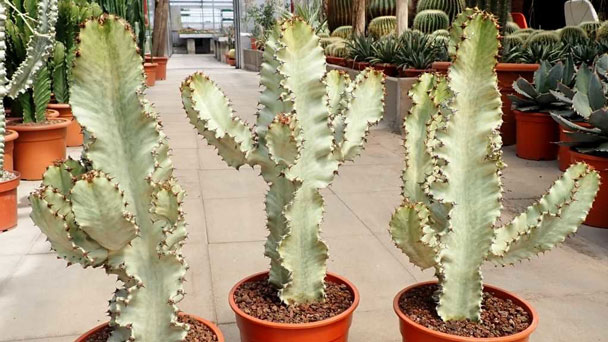
Most Popular Types of Euphorbia Varieties. This small tree or shrub features upright succulent stems with beautiful blazing red leaves that look like flowers. It is one of the most beautiful houseplants that you can grow.
Euphorbia abyssinica
Desert Candle is a tree-like succulent with a thick green trunk that becomes woody with maturity. It grows flowers without petals having yellow bracts.
Euphorbia tirucalli
The cylindrical-shaped branches of this plant look a lot like a pencil. Though it is usually green, but keep it in full sun and it will take a fiery red hue!
Euphorbia trigona
You must have seen this plant in a lot of pictures and movies! It looks a lot like cactus, but is actually a succulent! And yes, it can grow up to an impressive height of 6-8 feet.
Euphorbia lactea
This small shrub showcases upright green stems in cross-sections with a pale center. They have showy white and lime green patterns, with a couple of blackthorns.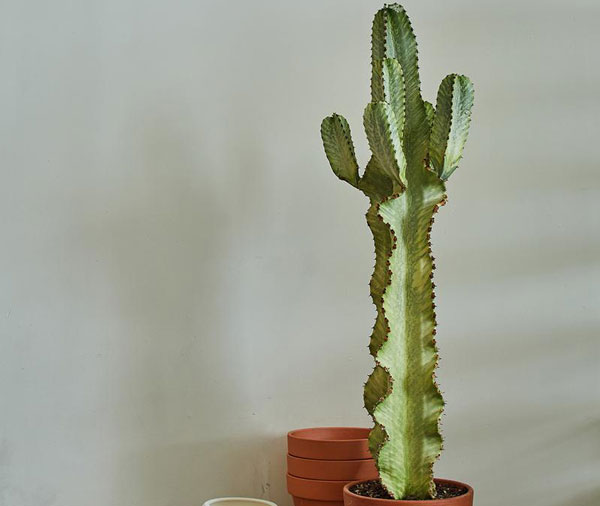
Euphorbia Ingens PictureEuphorbia Ingens InfoEuphorbia Ingens Native HabitsEuphorbia Ingens DistributionHow to Grow & Care for Euphorbia IngensHow to Grow Euphorbia IngensHow to Care for Euphorbia IngensEuphorbia Ingens UsesMedicinal UsesOther UsesVarieties of Euphorbia Euphorbia Ingens Common Pests/DiseasesEuphorbia Ingens Companion Plants
Euphorbia Ingens Picture

Euphorbia Ingens Info
| Scientific Name | Euphorbia Ingens |
| Common Names | Candelabra Tree, Common Tree Euphorbia, Cactus Euphorbia, Cactus Spurge |
| Family | Euphorbiaceae |
| Genus | Euphorbia |
| Range | Africa - Angola, Zambia, Malawi, Mozambique, Zimbabwe, Botswana, Swaziland, S. Africa. |
| Growth Rate | Fast Growing |
| Height | 20 - 50 feet |
| Width | 6 - 10 feet |
Euphorbia Ingens Native Habits
Euphorbia Ingens can survive in areas that experience prolonged drought or are usually very dry. Euphorbia Ingens can survive moderate frosts as low as about -2°C. Euphorbia Ingens prefer open, sunny location. Successful in dry, sandy, well drained soil. euphorbia ingens prefers warmer areas and can survive in areas that experience prolonged drought or are usually very dry. Euphorbia Ingens usually grows in deep sand in rocky outcrops or shrub vegetation. Birds like to build nests in these trees; Burrowing birds such as woodpeckers often use dead zones.Read More:
12 Popular Evergreen Plants with Pictures for Beginners
Euphorbia Ingens Distribution
Euphorbia Ingens occurs in Malawi, Mozambique, Zimbabwe, Zambia, Botswana, Tanzania, South Africa (in the north and east of the country), Rwanda, Uganda, Kenya and Swaziland. It grows on dry lands and semi savannas. Euphorbia Ingens prefers warm regions as it can survive long droughts. Euphorbia Ingens usually roots on rocky outcrops or deep in sand among the bush.
How to Grow & Care for Euphorbia Ingens
How to Grow Euphorbia Ingens
Propagate Euphorbia Ingens from seeds. However, it is not only difficult to find the seeds but generally germinating them is a challenge. Therefore the best way to propagate these plants is through cuttings.Propagate Euphorbia Ingens with Stem Cuttings
Wear gloves before handling the plants because it is naturally poisonous.
Use a sharp knife to take cuttings from around the branching point.
Hold it under cold running water to wash away the milky latex.
Allow the cutting to dry for about two weeks. You will notice a callus over the cut ends.
Plant them in preferred soil and see your Euphorbia Ingens grow into a beautiful tree.

How to Care for Euphorbia Ingens
- Light Care
- Soil Care
- Water Care
- Temperature and Humidity Care
- Fertilizer Care
- Pruning Care

Euphorbia Ingens Uses
Medicinal Uses
Although the latex of Euphorbia Ingens is very toxic, known to cause intense irritation and blistering to the skin and mucous membranes as well as temporary or even permanent blindness if it comes into contact with the eyes, it is often used in traditional medicine.The latex is taken in very small amounts, often on sugar, as a drastic purgative and to treat alcohol dependency.
The stems of Brachystegia spiciformis are chewed and the fibres dipped into the latex of this plant; the fibres are then dried and burnt and the smoke inhaled to treat asthma and bronchitis. The latex is used to treat chronic ulcers, warts and cancer. Pulverized root or a few drops of latex in porridge is eaten to treat bronchitis.
Other Uses
The Euphorbia Ingens wood is light and tough and is used to make boats, planks, and doors. Before cutting, the trunk is scorched to prevent the toxic latex from splashing.
Varieties of Euphorbia
Euphorbia pulcherrimaMost Popular Types of Euphorbia Varieties. This small tree or shrub features upright succulent stems with beautiful blazing red leaves that look like flowers. It is one of the most beautiful houseplants that you can grow.
Euphorbia abyssinica
Desert Candle is a tree-like succulent with a thick green trunk that becomes woody with maturity. It grows flowers without petals having yellow bracts.
Euphorbia tirucalli
The cylindrical-shaped branches of this plant look a lot like a pencil. Though it is usually green, but keep it in full sun and it will take a fiery red hue!
Euphorbia trigona
You must have seen this plant in a lot of pictures and movies! It looks a lot like cactus, but is actually a succulent! And yes, it can grow up to an impressive height of 6-8 feet.
Euphorbia lactea
This small shrub showcases upright green stems in cross-sections with a pale center. They have showy white and lime green patterns, with a couple of blackthorns.

Euphorbia Ingens Common Pests/Diseases
It is important to mention that the Euphorbia Ingens is a poisonous plant. If ingested, the latex can pose certain health threats. It can cause skin irritation and even blindness on contact. Since it is considered to be toxic, a lot of people avoid planting them in areas accessible to children and pets. There is a bright side to the toxic nature of this plant – the poisonous latex makes sure that pests bring no damage to the plants.Euphorbia Ingens Companion Plants
Euphorbia Ingens make great companion plants for most other xeriscape warm garden lanscapes and even good companions for each other, as can plainly be seen here (Euphorbia ammak hugging a Euphorbia Ingens)Latest Updated
- Benefits of Bugleweed - 7 Science-backed Health Benefits
- Bugleweed Dangers & Side Effects - Is It Poisonous?
- How to Plant Evergreen Trees - What You Should Know
- When to Plant Evergreens - Grow Guide for Evergreen Trees
- 12 Wonderful Evergreen Shrubs for Your Garden
- 12 Popular Evergreen Plants with Pictures for Beginners
- When And How To Prune A Lilac Bush Like a Pro
- How to Grow & Care for Lilac Vine (Hardenbergia Violacea)
- Japanese Lilac Tree (Syringa Reticulata) Care & Propagation Guide
- Shumard Oak Pros and Cons - What to Know
Popular Articles
- Winter maintenance of Antirrhinum Majus
- How to Grow Terminalia Mantaly Tree
- How to Grow and Care for Crossostephium Chinense
- How to grow Antirrhinum Majus in spring
- Peristeria Elata (Dove Orchid) Profile: Info & Care Guide
- Underwatered Snake Plant (Sansevieria Trifasciata) - Signs And How To Fix
- How to Care for Brazilian Jasmine Plant (Mandevilla Sanderi)
- How to Grow & Care for Graptopetalum Purple Delight in Summer
- Rosa Chinensis (China Rose): Plant Growing & Care Tips
- How to Care for Baby Sun Rose (Aptenia Cordifolia)